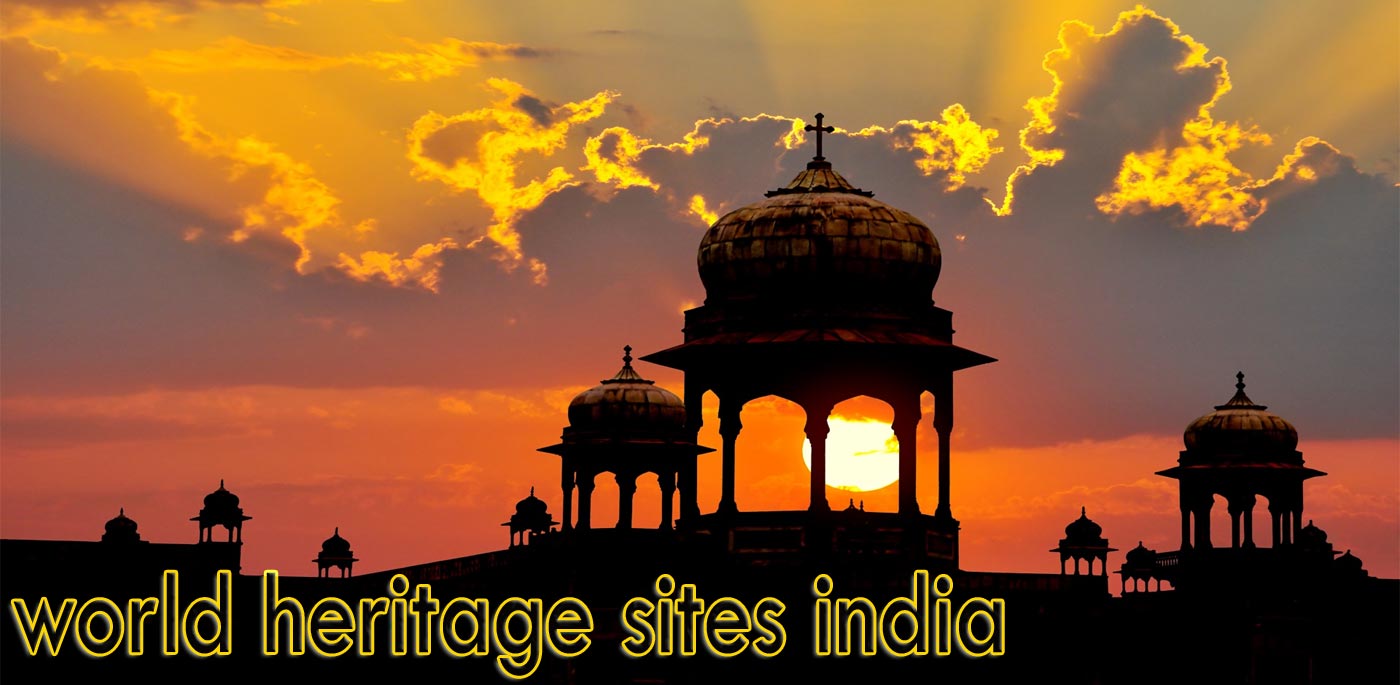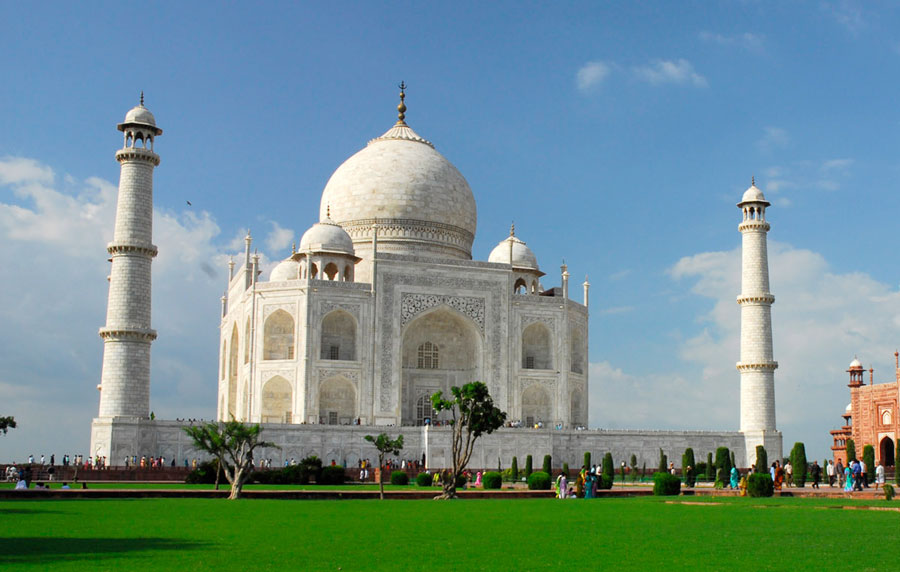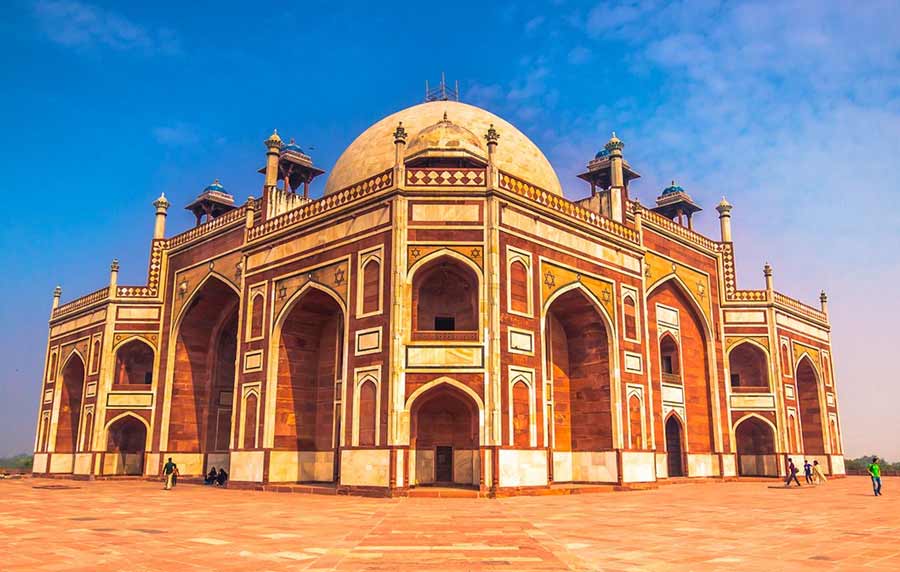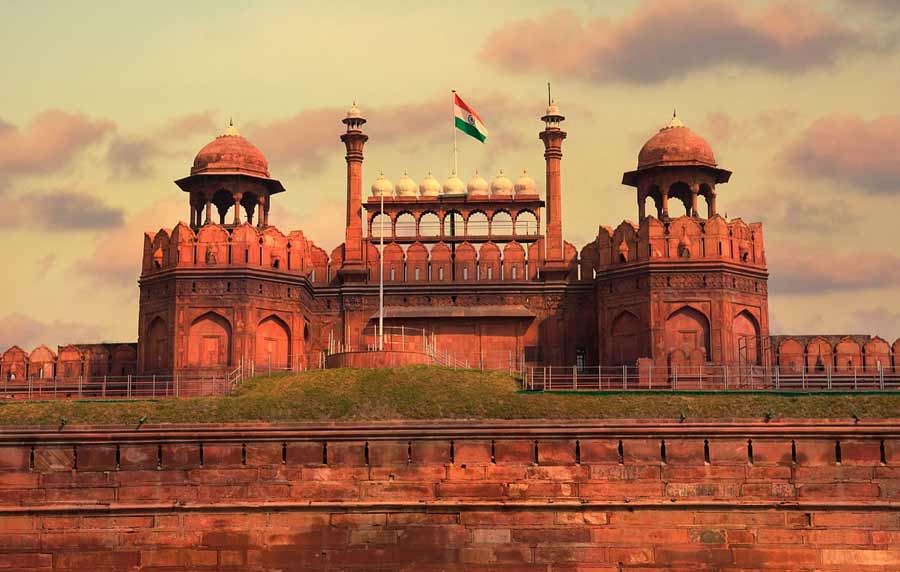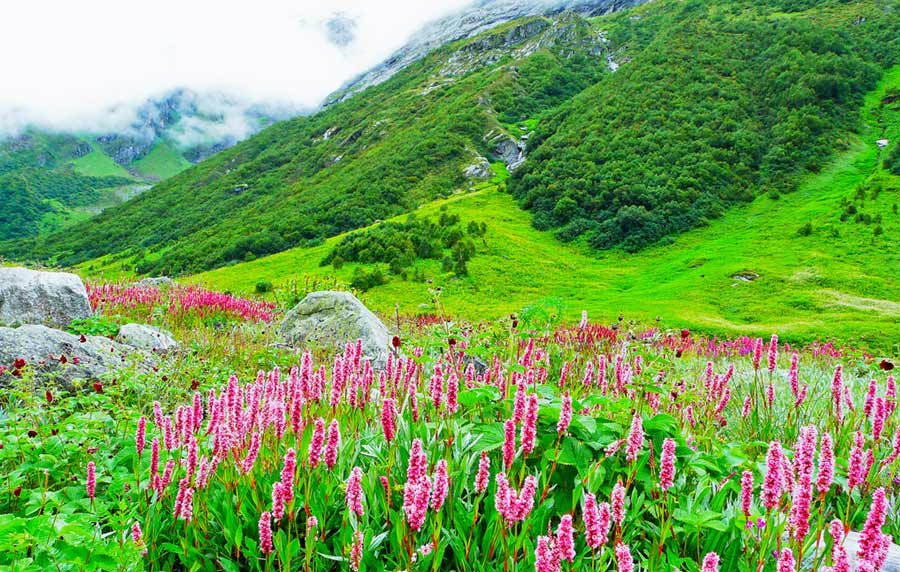Taj Mahal
The Taj Mahal is located on the right bank of the Yamuna River in a vast Mughal garden that encompasses nearly 17 hectares, in the Agra District in Uttar Pradesh. It was built by Mughal Emperor Shah Jahan in memory of his wife Mumtaz Mahal with construction starting in 1632 AD and completed in 1648 AD, with the mosque, the guest house and the main gateway on the south, the outer courtyard, and its cloisters were added subsequently and completed in 1653 AD. The existence of several historical and Quranic inscriptions in Arabic script have facilitated setting the chronology of Taj Mahal. For its construction, masons, stonecutters, inlayers, carvers, painters, calligraphers, dome-builders and other artisans were requisitioned from the whole of the empire and also from Central Asia and Iran. Ustad-Ahmad Lahori was the main architect of the Taj Mahal.
The Taj Mahal is considered to be the greatest architectural achievement in the whole range of Indo-Islamic architecture. Its recognized architectonic beauty has a rhythmic combination of solids and voids, concave and convex and light shadow; such as arches and domes further increases the aesthetic aspect. The color combination of lush green scape reddish pathway and blue sky over it showcases the monument in ever-changing tints and moods. The relief work in marble and inlay with precious and semi-precious stones make it a monument apart.
There isn’t much to say about the Taj Mahal. It is one of the best-known structures on Earth. During the recent selection of the New Seven Wonders of the World, it was put on the list.
It is without question the single most identifiable thing associated with India. There are numerous Indian restaurants which use it as their name, and you can find a picture of it hanging in many others. If you are playing a video game like Civilization, the Taj Majal is almost always associated with India in some form.
Visiting the Taj Majal and seeing it in person, will convince you that all the attention and notoriety is well deserved.
There is nothing quite like it in scale or quality. If you visit other Mogul tombs before visiting the Taj (such as Humayun’s Tomb in Delhi or the nearby Little Taj in Agra) you will have a much greater appreciation just how magnificent it is. The earlier tombs can almost be considered beta versions of the Taj Mahal both in terms of size and quality.
If you visit the Taj Mahal, I highly recommend arriving as early as possible. The gates open at 7 am. I arrived at 5:50 am and was first in line. Being there first gives you an opportunity to take some photos without any people. Even 15 minutes after the gates open, the area will be filled with people. To do this you will have to stay overnight in Agra and not just take a day tour from Delhi.
Overview
Taj Mahal is a cultural UNESCO World Heritage Site in India. This is an ivory white marble mausoleum located in Agra, India. Before it was inscribed in the UNESCO list in 1983, it is already recognized as one of the top tourist attractions in India. In fact, there are up to 8 million visitors who come to see Taj Mahal every year (as of 2014).
The mausoleum is one of the grandest of its kind in the world. It has a height of 73 meters and was built from 1632 to 1653. It features Mughal architectural style and is a work of Architect Ustad Ahmad Lahauri.
UNESCO World Heritage Sites India
The United Nations Educational, Scientific and Cultural Organization (UNESCO) World Heritage Sites are important places of cultural or natural heritage as described in the UNESCO World Heritage Convention, established in 1972. There are 37 World Heritage Sites located in India. These include 29 cultural sites, seven natural sites and one mixed site. India has the sixth largest number of sites in the world. Recently, Orchha is enlisted in the tentative list of UNESCO. The Seventh Wonder of the World and a UNESCO World Heritage Site, Taj Mahal is not merely a site that brings us to the pages of history; it is an epitome of true love, brilliant architecture and artistic precision. The white-marble mausoleum was commissioned by Shah Jahan for his wife, Mumta Mahal, way back in 1632. And to complete the masterpiece it took about 22 years and as much as 20,000 artisans.
 +91 9799050299
+91 9799050299 

